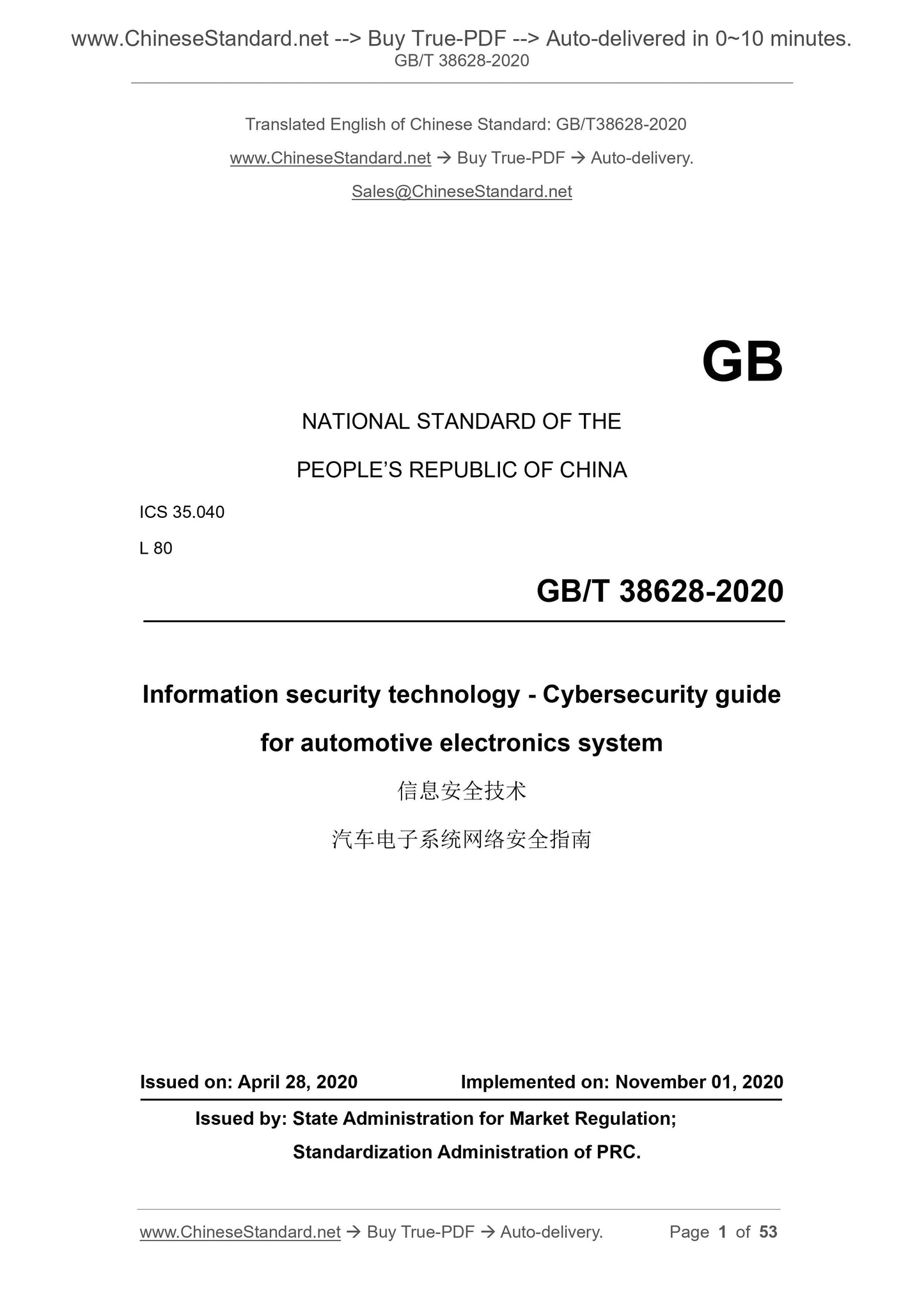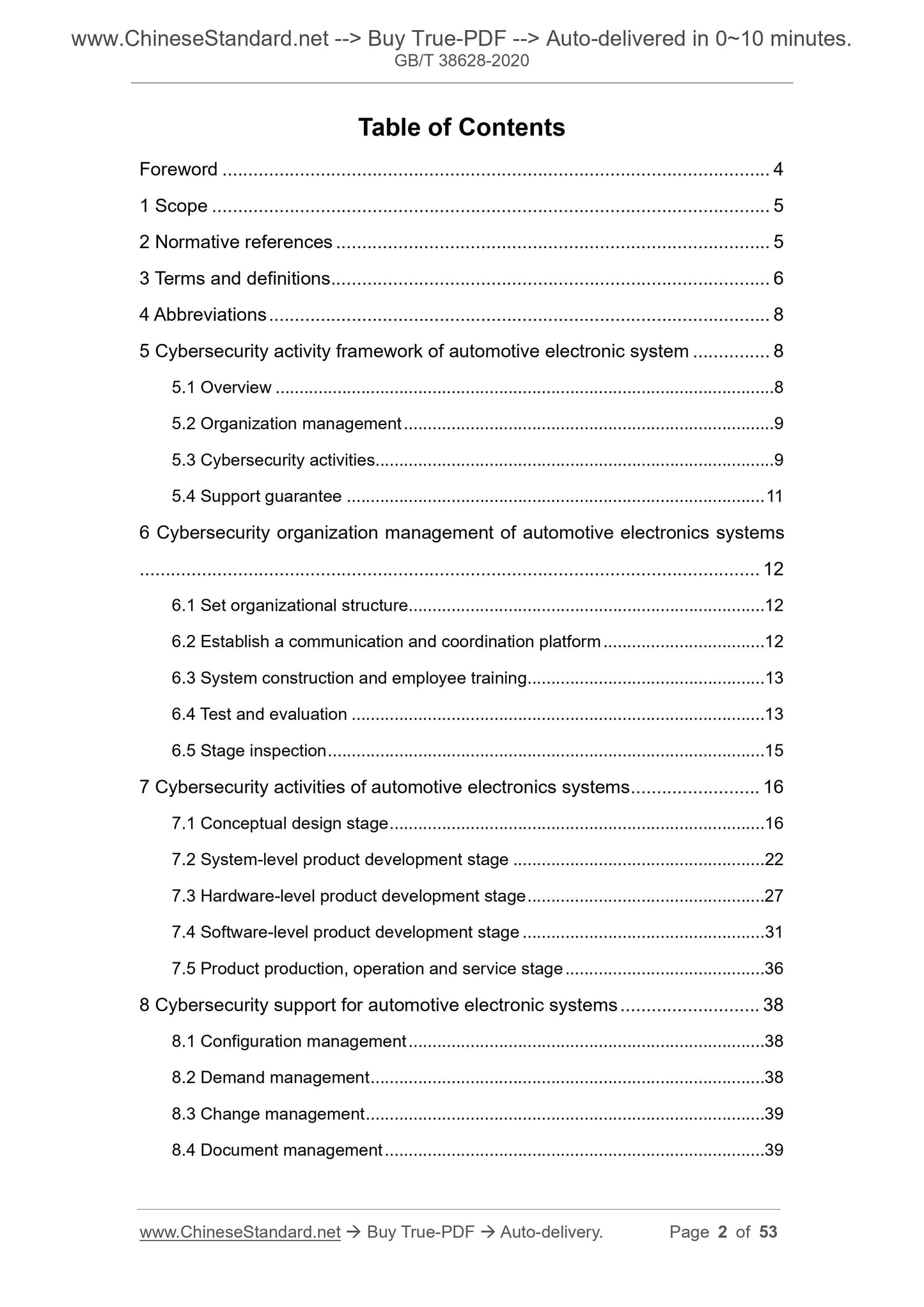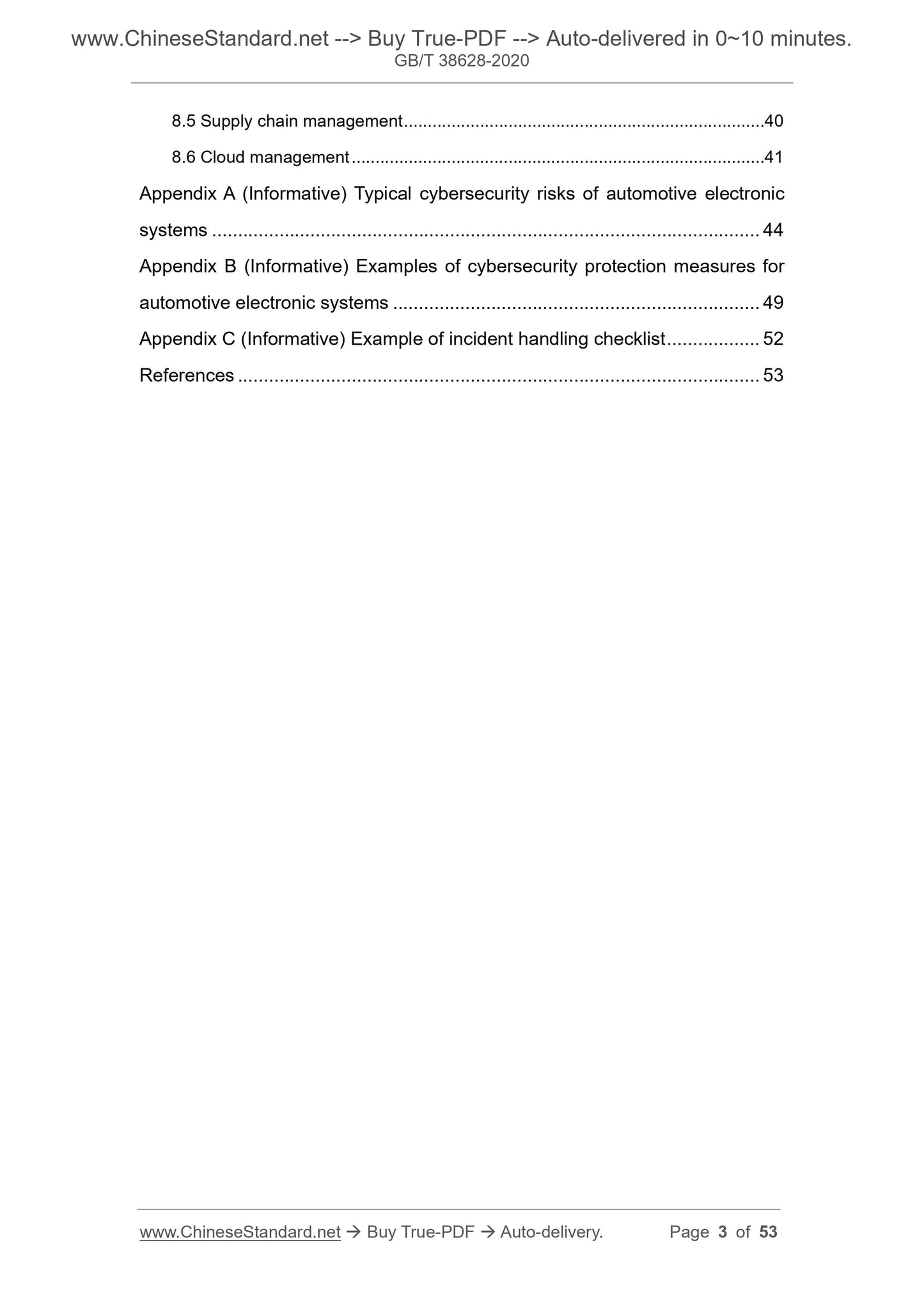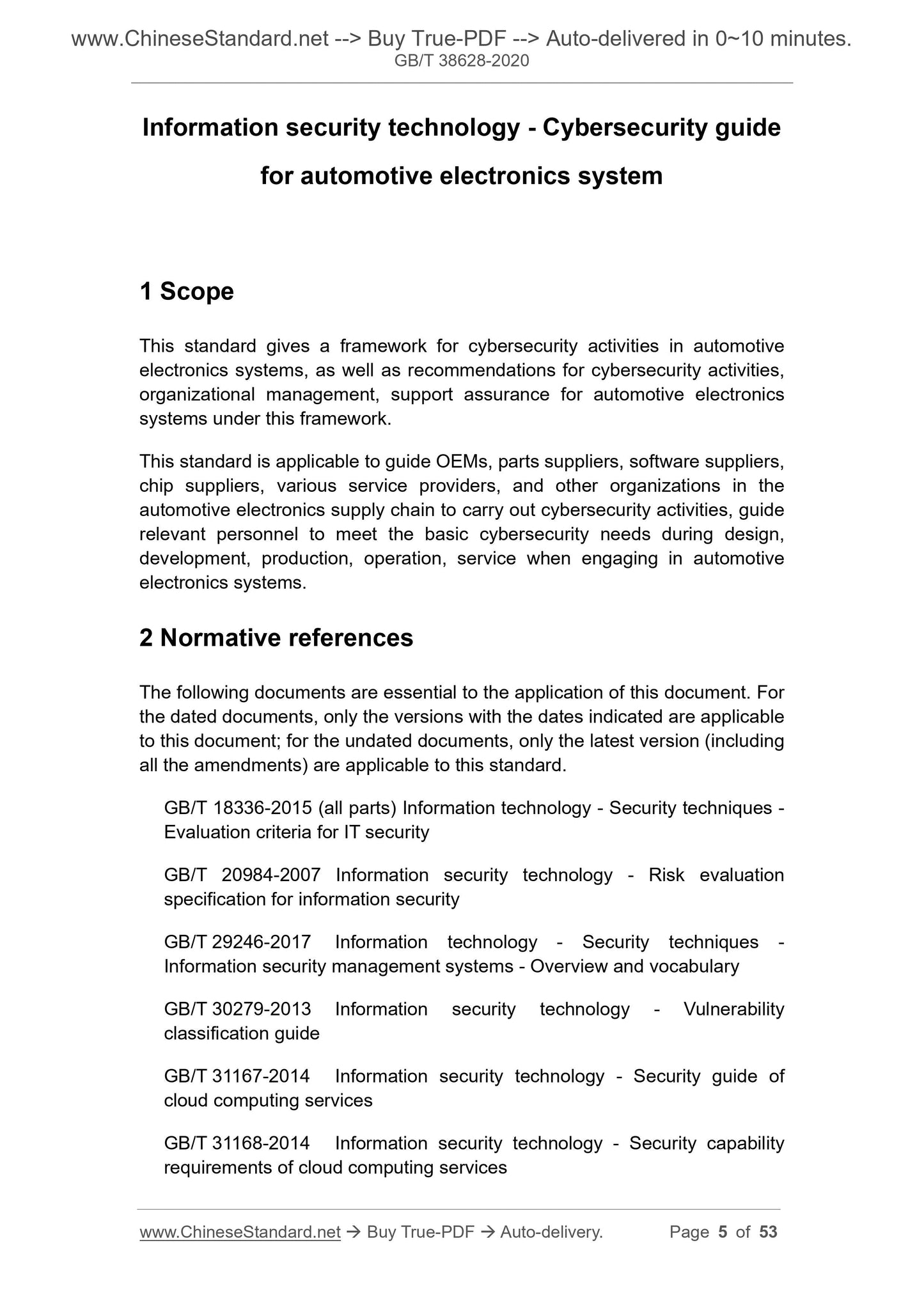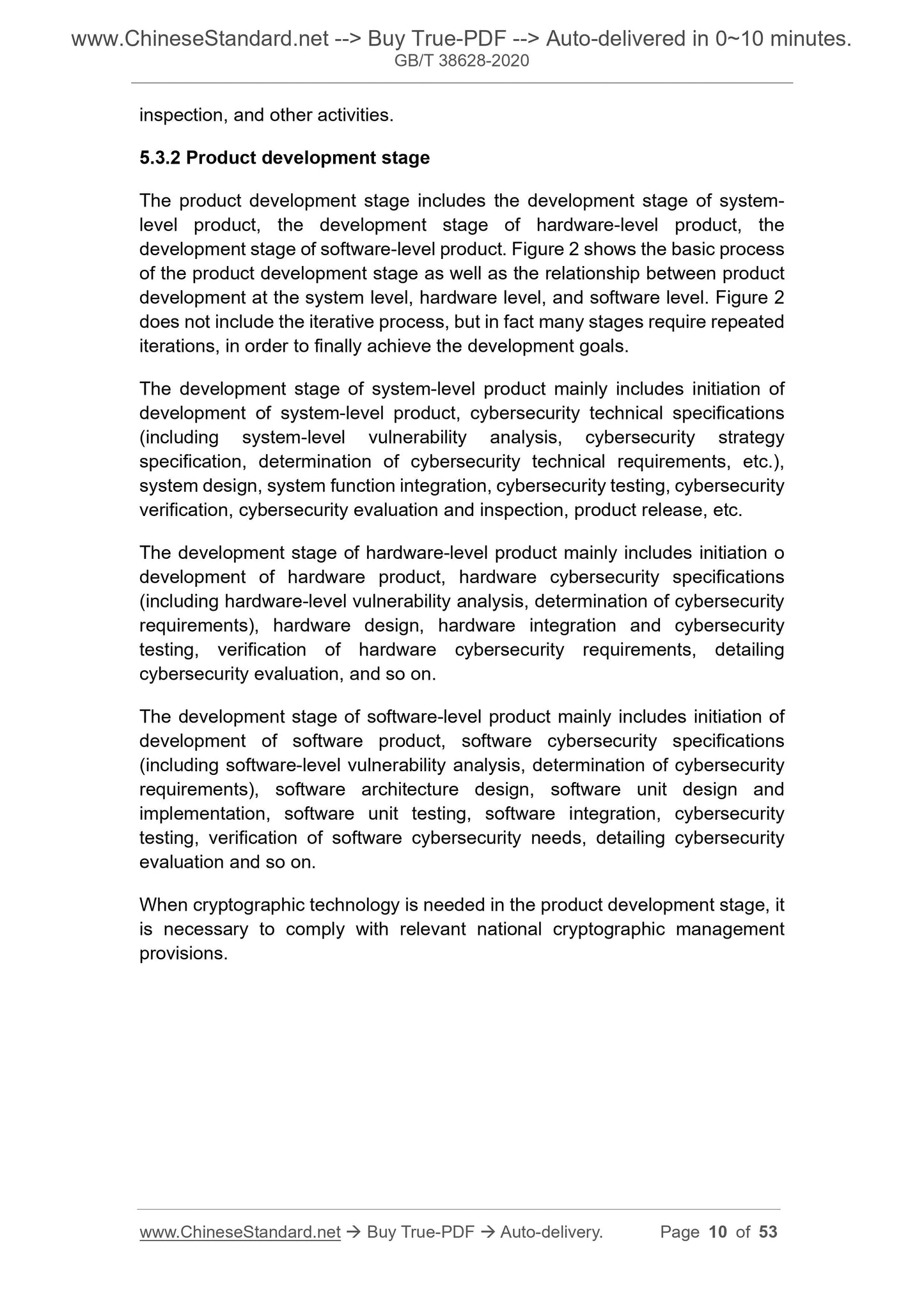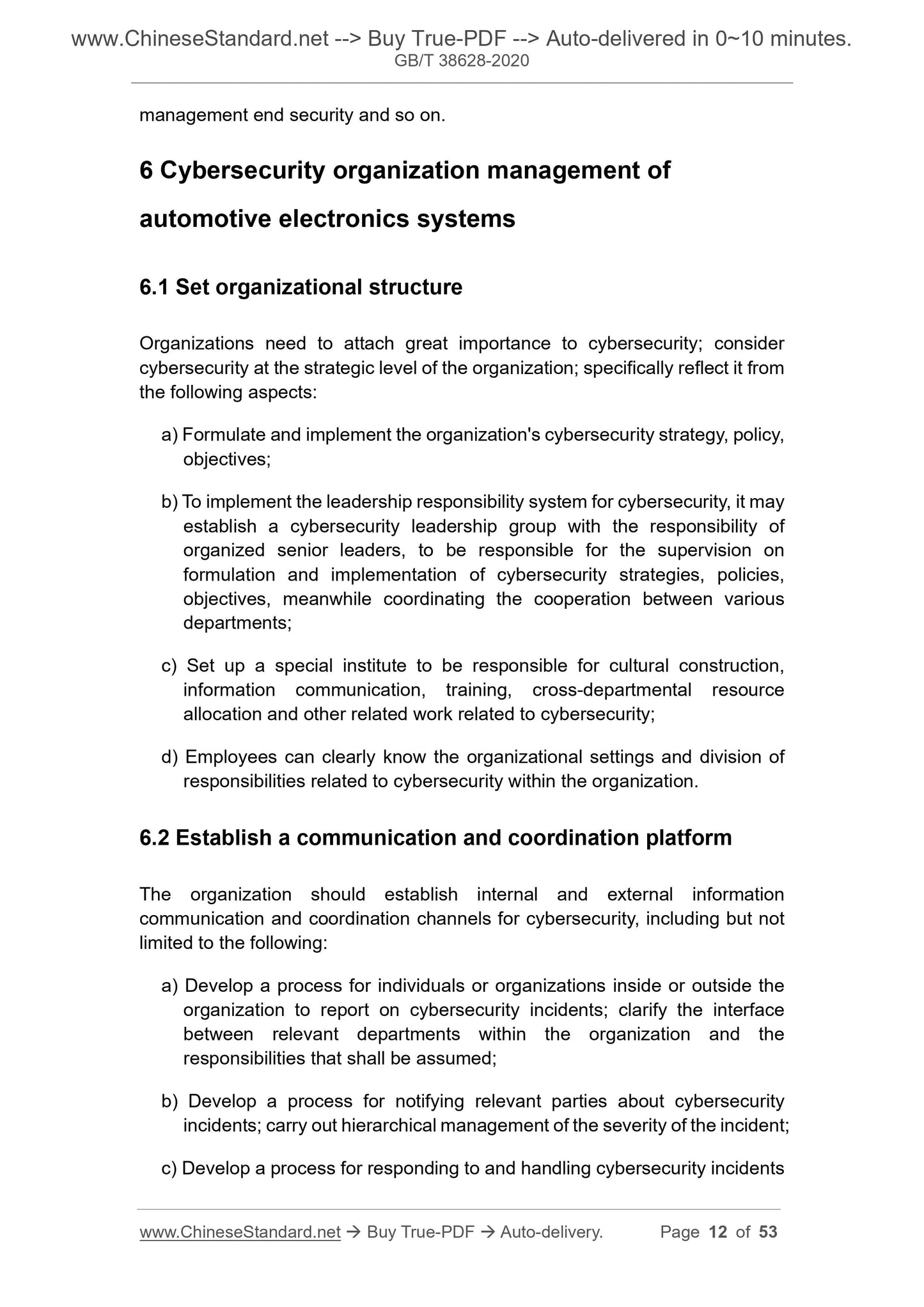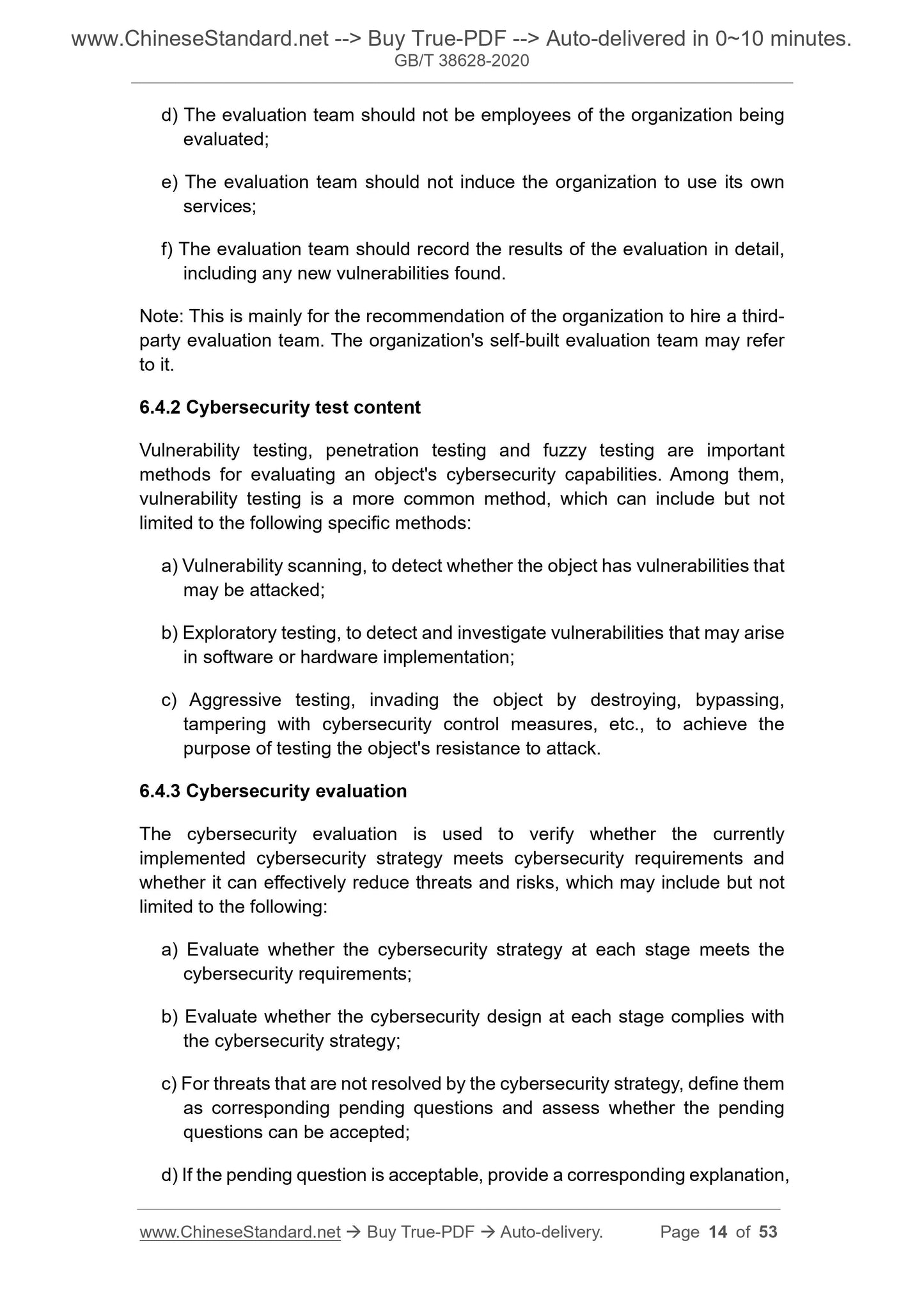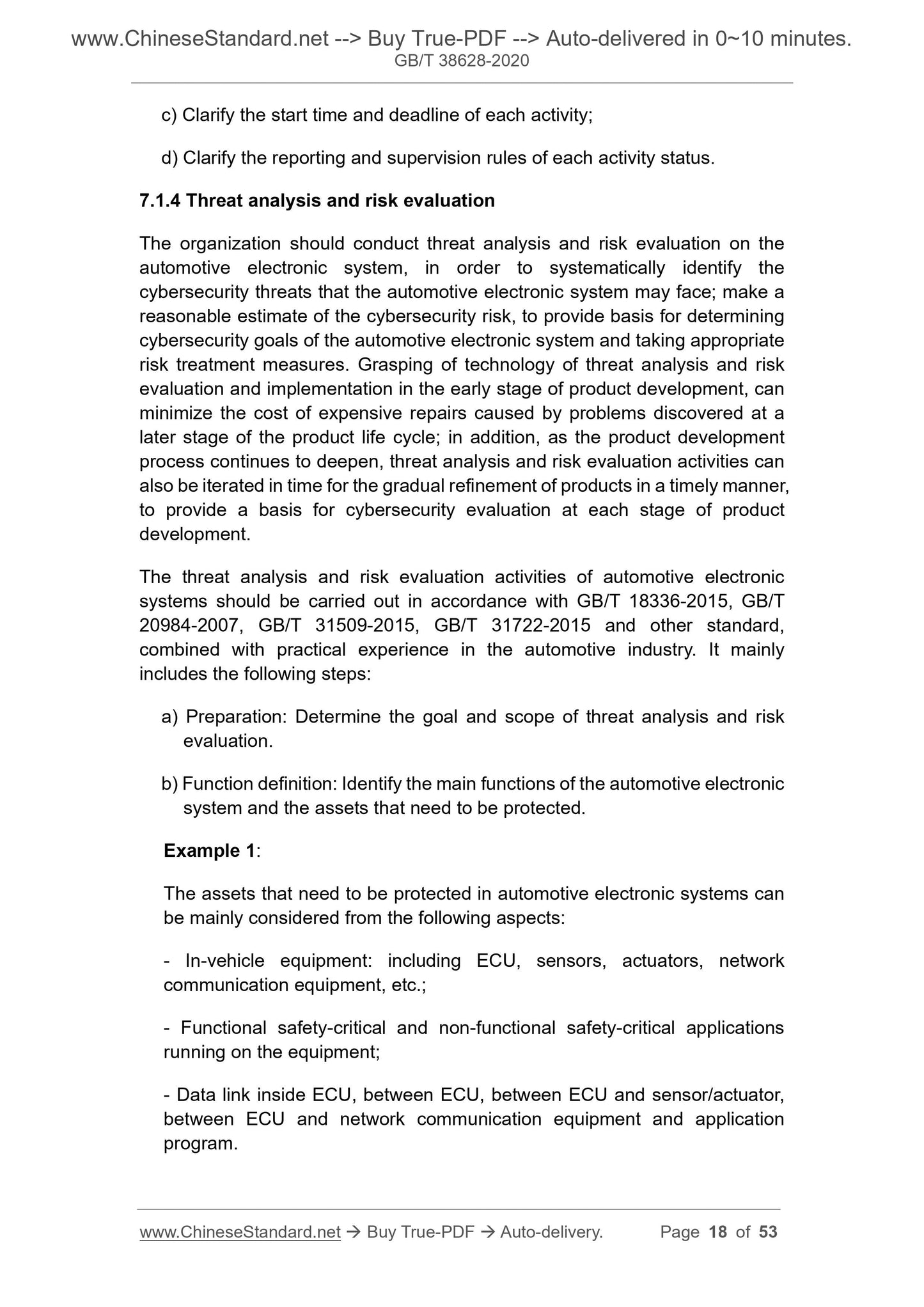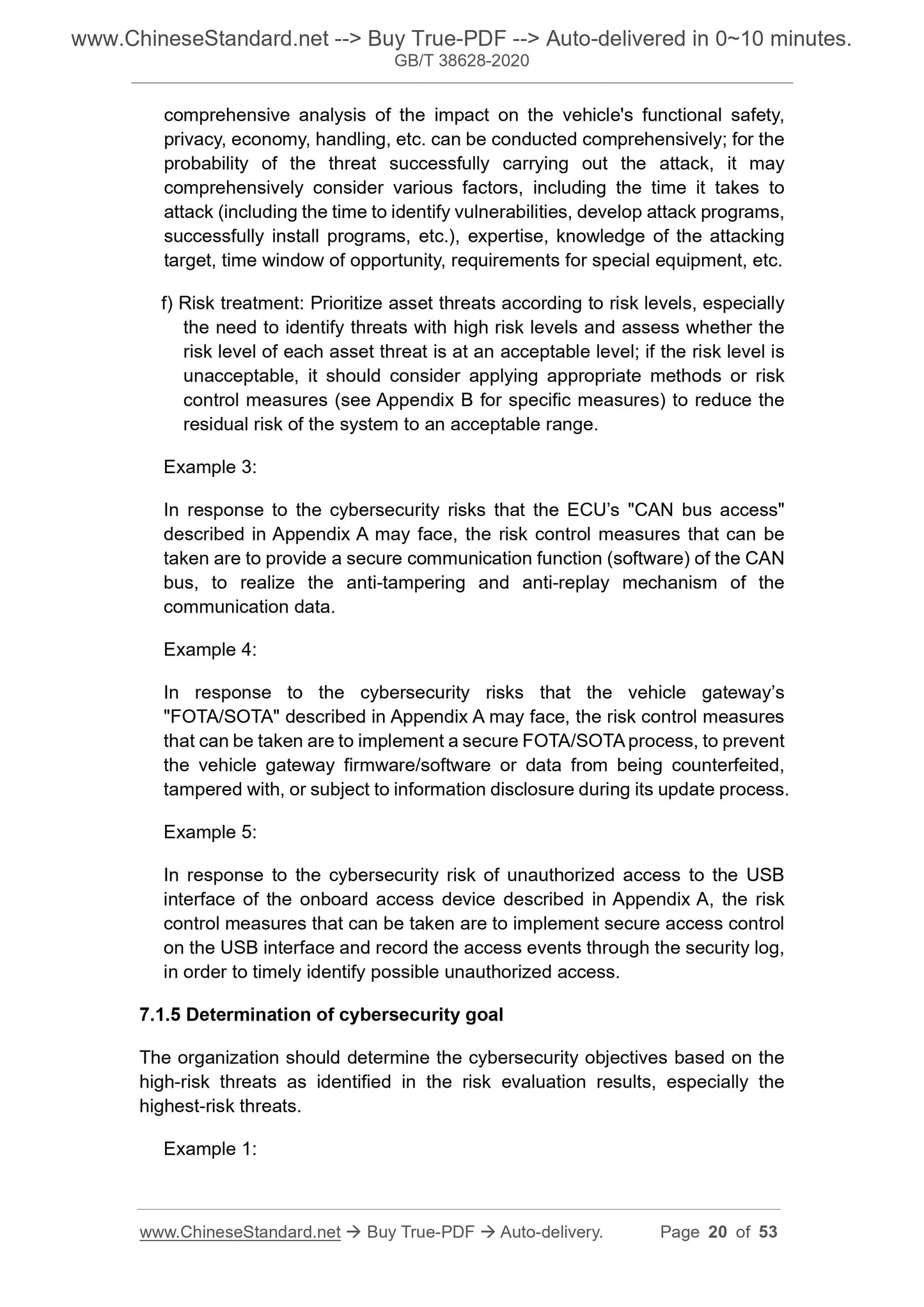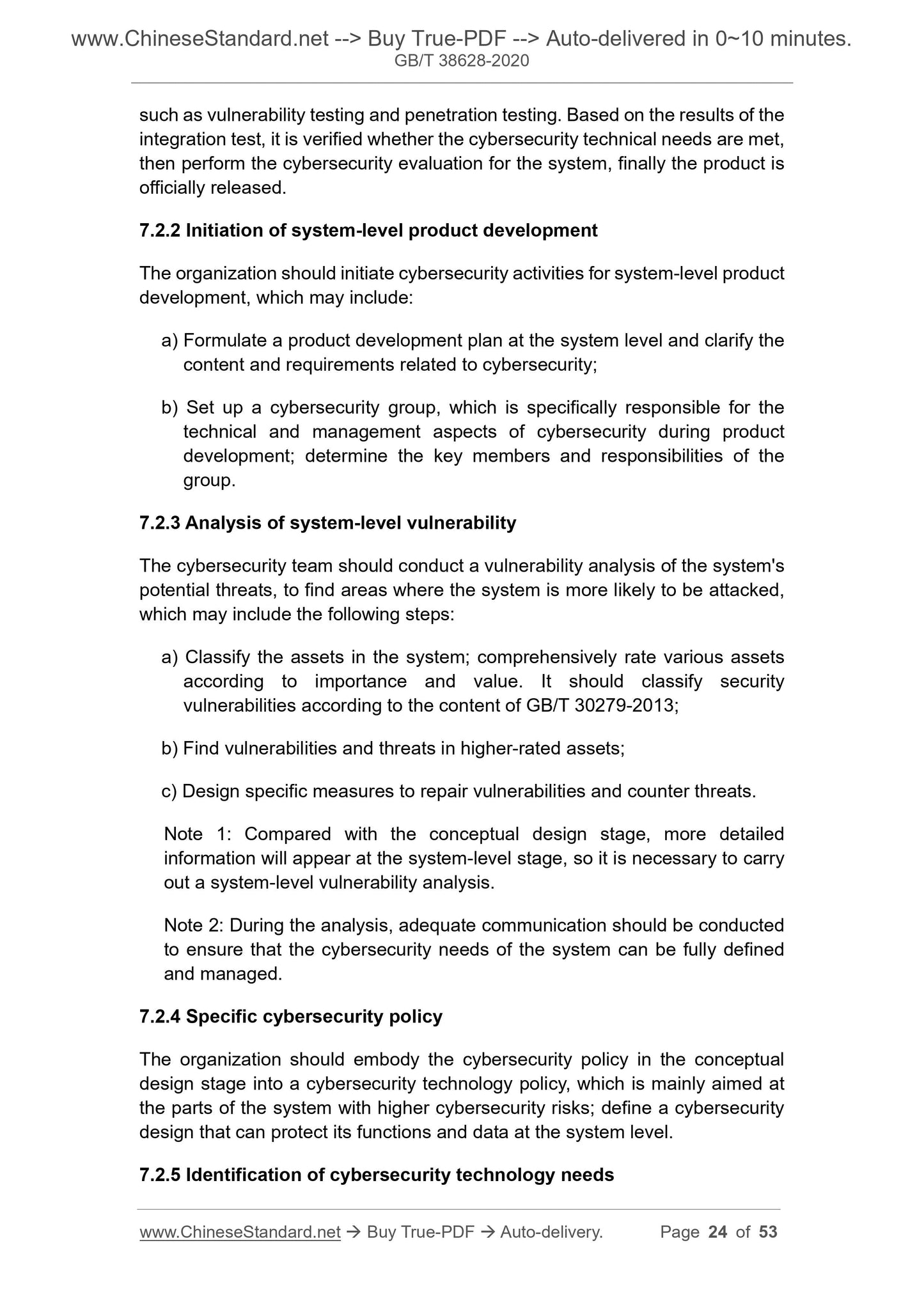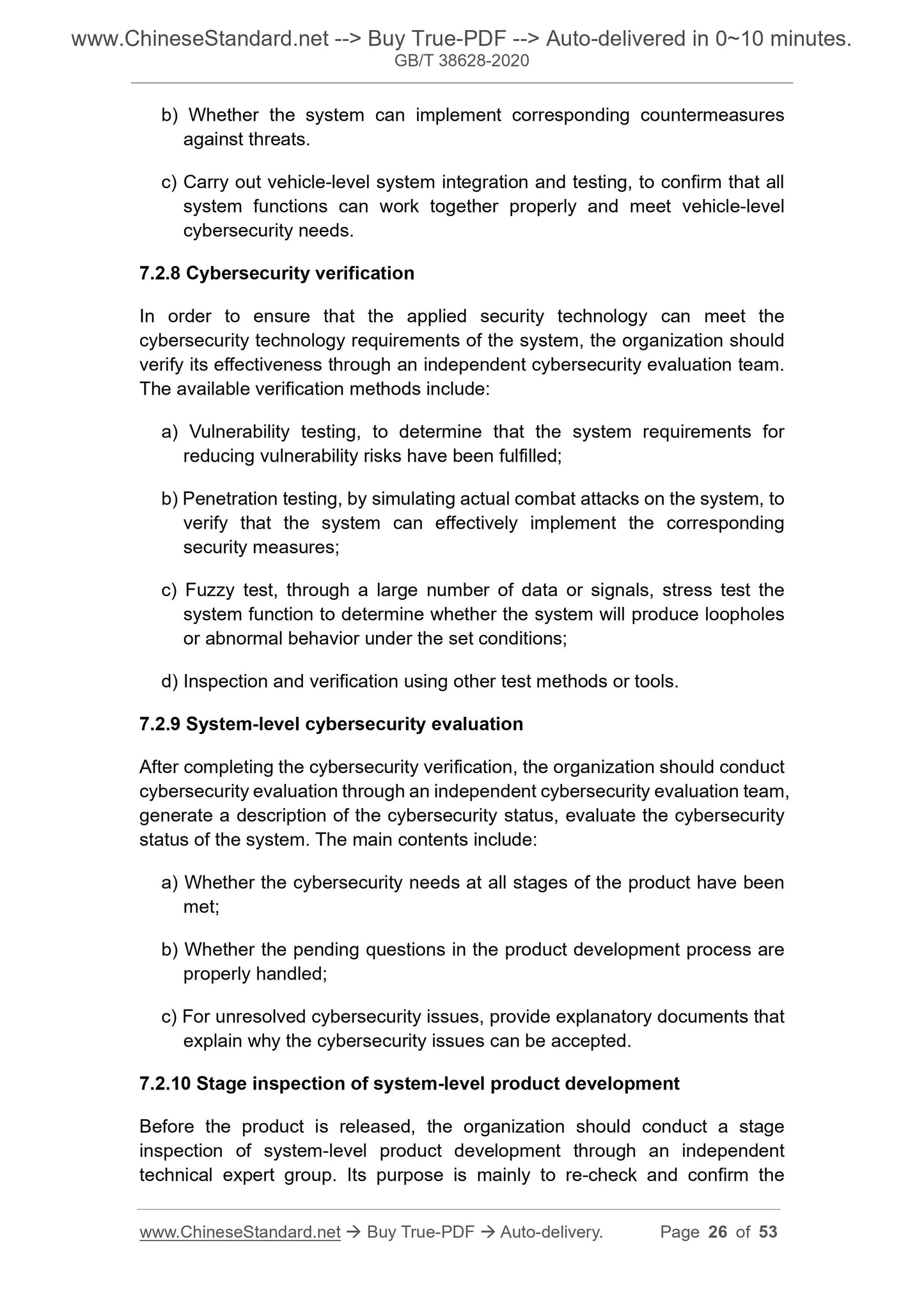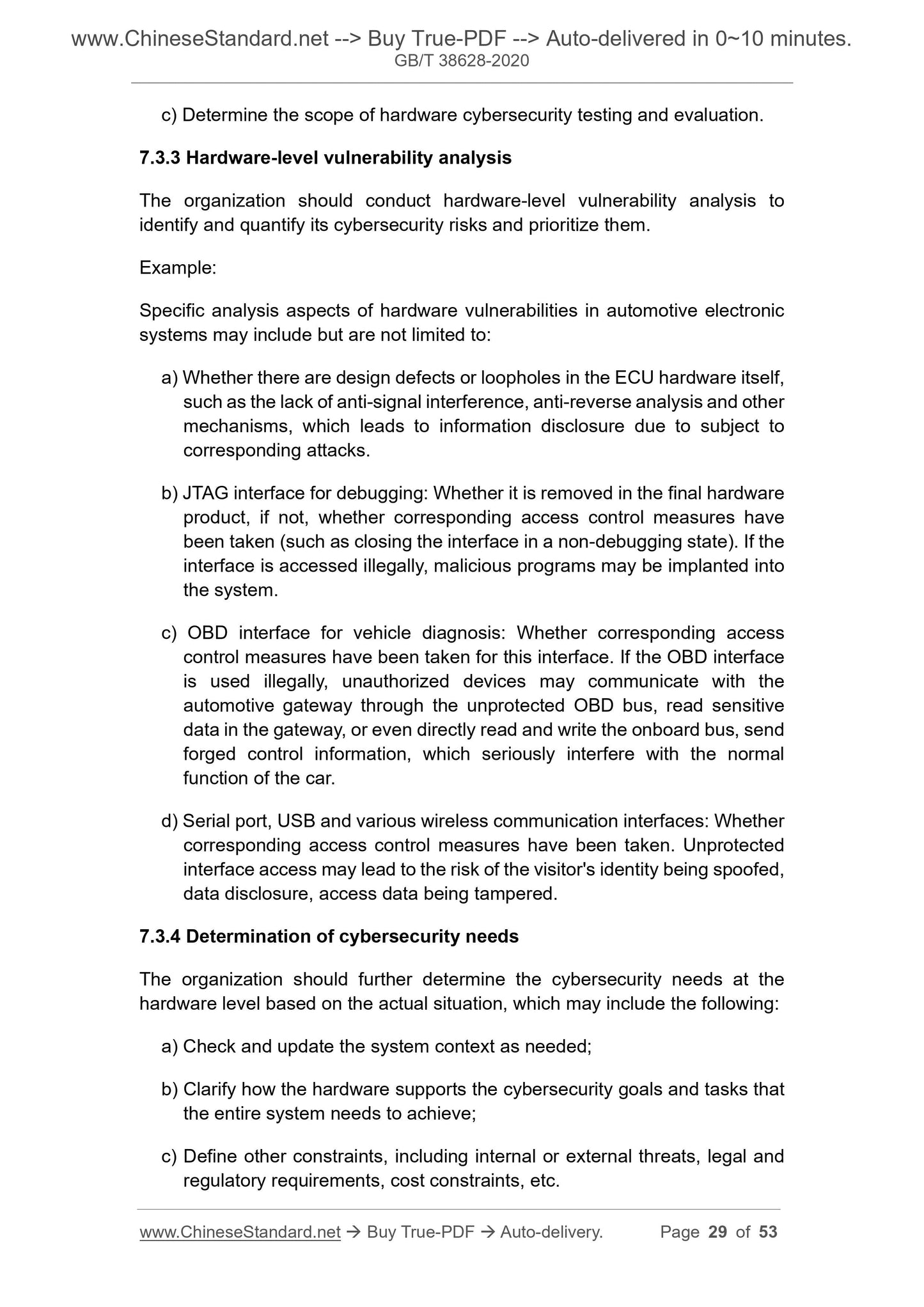1
/
of
12
www.ChineseStandard.us -- Field Test Asia Pte. Ltd.
GB/T 38628-2020 English PDF (GB/T38628-2020)
GB/T 38628-2020 English PDF (GB/T38628-2020)
Regular price
$355.00
Regular price
Sale price
$355.00
Unit price
/
per
Shipping calculated at checkout.
Couldn't load pickup availability
GB/T 38628-2020: Information security technology - Cybersecurity guide for automotive electronics system
Delivery: 9 seconds. Download (and Email) true-PDF + Invoice.Get Quotation: Click GB/T 38628-2020 (Self-service in 1-minute)
Newer / historical versions: GB/T 38628-2020
Preview True-PDF
Scope
This standard gives a framework for cybersecurity activities in automotiveelectronics systems, as well as recommendations for cybersecurity activities,
organizational management, support assurance for automotive electronics
systems under this framework.
This standard is applicable to guide OEMs, parts suppliers, software suppliers,
chip suppliers, various service providers, and other organizations in the
automotive electronics supply chain to carry out cybersecurity activities, guide
relevant personnel to meet the basic cybersecurity needs during design,
development, production, operation, service when engaging in automotive
electronics systems.
Basic Data
| Standard ID | GB/T 38628-2020 (GB/T38628-2020) |
| Description (Translated English) | Information security technology - Cybersecurity guide for automotive electronics system |
| Sector / Industry | National Standard (Recommended) |
| Classification of Chinese Standard | L80 |
| Classification of International Standard | 35.040 |
| Word Count Estimation | 30,349 |
| Date of Issue | 2020-04-28 |
| Date of Implementation | 2020-11-01 |
| Quoted Standard | GB/T 18336.1-2015; GB/T 18336.2-2015; GB/T 18336.3-2015; GB/T 20984-2007; GB/T 29246-2017; GB/T 30279-2013; GB/T 31167-2014; GB/T 31168-2014; GB/T 31509-2015; GB/T 31722-2015 |
| Issuing agency(ies) | State Administration for Market Regulation, China National Standardization Administration |
| Summary | This standard specifies a framework for cybersecurity activities of automotive electronic systems, as well as recommendations for cybersecurity activities, organizational management, and support for automotive electronic systems under this framework. This standard is applicable to instruct OEMs, parts suppliers, software suppliers, chip suppliers, and various service providers to carry out cybersecurity activities in various organizations in the automotive electronics supply chain, and instruct relevant personnel to conduct cybersecurity activities in automotive electronics systems. Meet the basic network security requirements in the process of design and development, production, operation and service. |
Share
